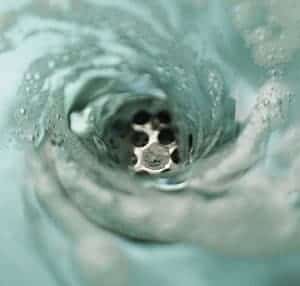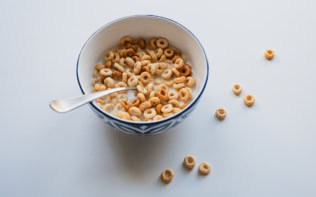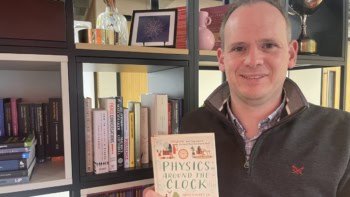Robert P Crease looks at some of your favourite legends – right and wrong – from the history of physics

In my column in November 2006 (see “Physics Legends”), I discussed stories from the history of science that we repeat even when we suspect that they are wrong. I then asked for your favourites and for ideas why such legends persist. Dozens of readers replied, mentioning legends involving oversimplifications or falsifications of science, of history or of the world. Some of you even protested that stories that I had claimed were true are in fact false, and vice versa.
The apple, the sink and the pendulum
Robert Matthews – a science writer and visiting reader in science at Aston University in the UK – found me too credulous regarding Newton’s apple. Yes, he granted, historians have traced the tale back to Newton himself, but that does not make it true. Why, he asked sensibly, was Newton – a notoriously secretive and paranoid person – suddenly so chatty about how he got an idea, unless to cement priority over his rival Hooke?
Several readers took up my discussion of whether the Coriolis effect really makes bath water swirl down the drain in opposite directions in different hemispheres. Chris Coffman, an investment banker from Australia whose father is a nuclear physicist, said he actually saw a demonstration of the Coriolis effect in a washbasin at the Equatorial Monument outside Quito in Peru.
When the sink was placed 1 m north of the line marking the equator, the water swirled down the drain in one direction and in the opposite direction when 1 m south. When the sink was placed directly over the line, the water “sputtered out” without swirling. “The effect was extraordinarily dramatic,” wrote Coffman, “like switching poles on a magnet, not gradual as one might assume.” Other readers had also seen the demonstration but commented that it collided with their physical intuitions; one reported that a hand-held GPS showed the equator line to be wrong by a hundred metres or so.
I asked my colleague Cliff Swartz – an expert in establishing relative magnitudes – if you can really see the Coriolis effect in a sink. “My son once asked me that,” Swartz replied, “and I told him to go see for himself.” The outcome? “He said it depended on which faucet you turn on first, which I think is right.” This inspired me to look for myself. The water in my kitchen sink almost always swirled away anticlockwise, while that in my bathroom sink always swirled clockwise. In his book Back-of-the-Envelope Physics, Swartz computes the Coriolis acceleration to be smaller than the gravitational acceleration by a factor of 105, and he showed me a precision measurement by researchers at the Massachusetts Institute of Technology (Nature 196 1080). The effect is strong enough to shape hurricanes, Swartz said, but not water in a basin, which is overwhelmed by other forces. Which makes me wonder: what is happening in that sink in Quito?
Several respondents mentioned Galileo’s discovery of the isochrony of pendulums from the swing of a chandelier, saying that the story is surely false because the famous chandelier hanging in Pisa’s Duomo dates from 1587, years after Galileo’s work. This argument does not impress me. The “new” chandelier replaced an earlier one, which may well have inspired Galileo and, of course, obeyed the same laws of physics.
Buoyancy, bees and Brownian motion
Archimedes’ “Eureka!” story sparked much interest. Paul Millington, a teacher in Birmingham, UK, gets younger students to re-enact the famous bath-time tale with puppets. Other respondents, however, cautioned that this episode is frequently mistaught as being about the discovery of density rather than of the principle of buoyancy. Archimedes, they say, did not have to discover that a body placed in water displaces its own volume. Rather his delight came from the realization that such a body is lighter, relating to the weight of the displaced water; in other words, if he weighed a crown in air and water he could obtain the object’s density.
Some respondents mentioned jests that became legends when taken too seriously. Ken Zetie, head of physics at St Paul’s School in London, offered an example: the tale that scientists used the laws of aerodynamics to prove that bumble-bees cannot fly. My colleague Elof Carlson mentioned another: that so-called preformationists believed that tiny figures existed inside sperm.
Matthews also pointed out that the microscopic observations of “Brownian motion” by Robert Brown did not have anything to do with battered pollen grains, as is often claimed, but with particles inside the pollen. Meanwhile, Malcolm Hayes from the University of Southern Maine says he likes to ask people who repeat the familiar story that glass flows to explain why no aberration has been seen on the 200 inch glass mirror on Mount Palomar’s telescope.
The critical point
While legends are educationally useful, they are a trade-off between the value of illustrating scientific principles on the one hand and the value of historical accuracy on the other. Legends may also, I think, illustrate aspects of science that are not included in traditional accounts of its methodology, help clarify the meaning of a principle, and have social value. For scientists, like other people, enjoy telling and hearing good stories.
But legends have dangers too: those that oversimplify science can make us feel smugly superior to supposedly solid science and make us think that the world works differently from the way science says. As Zetie notes, “they allow us to think ‘science proved bees can’t fly so I’ll happily ignore warnings about global warming'”. Legends that oversimplify science history can lead to illegitimate charges of fraud. Brown, for instance, has been accused of fraud by some who pointed out that he could not have seen what he is (incorrectly) said to have seen – that atomic motions move pollen. And legends that oversimplify the world, such as that the Coriolis effect is seen in sinks, are potentially harmful by encouraging a distrust of science teaching and science itself.



